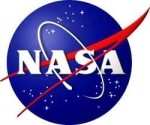Tue, Nov 10, 2009
49 Examples Of NASA Innovation Now Available To Us All
 The 2009 edition of NASA's Spinoff, a publication that shows
how NASA technology is being put to use in everyday life here on
Earth, is now available in print and online.
The 2009 edition of NASA's Spinoff, a publication that shows
how NASA technology is being put to use in everyday life here on
Earth, is now available in print and online.
The latest Spinoff highlights 49 significant examples of how
NASA innovations have been transferred to the commercial
marketplace, resulting in healthcare advances, transportation
breakthroughs, public safety initiatives, new consumer goods,
environmental protection, computer technology, and industrial
productivity.
In honor of the 40th anniversary of the Apollo 11 lunar landing,
this year's edition of Spinoff also recaps how Apollo continues to
provide tangible benefits to the lives of people in the U.S. and
around the world.
Highlights of Spinoff 2009 include:
- How a NASA scientist-licensed Hubble Space Telescope scheduling
technology and adapted it to help hospitals handle dynamic
rescheduling issues. Using the On-Cue system, one hospital reported
a 12 percent increase in procedure volume, a 35 percent reduction
in staff overtime, and significant reductions in backlog and
technician phone time.
- The Givens Buoy Life Raft incorporates a NASA-developed raft
design used for recovering pioneer astronauts after ocean
splashdowns, and has been credited with saving more than 400
lives.
- An adapted Hubble Space Telescope star-mapping algorithm is
helping researchers track the elusive whale shark using the unique
spots on the shark's skin. Using the algorithm and a photograph
database receiving contributions from scuba divers worldwide,
researchers last year documented more than 2,400 sightings of the
rare animal. Previously, there were only a few hundred documented
sightings in total.
- Using NASA satellite data, WorldWinds Inc. supplies about 8,500
XM satellite radio subscribers with its FishBytes fish locator
service. FishBytes helps anglers target areas most likely to be
frequented by their favorite types of sport fish.
Spinoff 2009 also highlights NASA research and development
activities that are helping to make NASA's future missions a
reality and profiles NASA education efforts and partnership
successes. It also provides reference information and resources
available through the NASA's Innovative Partnerships Program.
More News
Also: New SAF, Korean Air Buys 103 Boeings, Maryland SP Helo Rescue, OK AWOS Update Gulfstream Aerospace Corporation announced its first customer delivery of the all-new Gulfstream>[...]
"This is just an absolute win win win. If there is a rejected takeoff we now have the confidence that the arrestor system will ensure passenger and crew safety." Source: FAA Admini>[...]
Low Approach An approach over an airport or runway following an instrument approach or a VFR approach including the go-around maneuver where the pilot intentionally does not make c>[...]
Aero Linx: Historic Aircraft Association (HAA) The Historic Aircraft Association (HAA) was founded in 1979 with the aim of furthering the safe flying of historic aircraft in the UK>[...]
While Flying About 1,500 Ft Above Ground Level, A Large Bird Struck The Right Side Of The Airplane Analysis: The pilot reported that while flying about 1,500 ft above ground level,>[...]
 Airborne 08.29.25: G800 Delivery, Alaska F-35 Crash, USCG-RCAF Medevac
Airborne 08.29.25: G800 Delivery, Alaska F-35 Crash, USCG-RCAF Medevac Aero-News: Quote of the Day (08.30.25)
Aero-News: Quote of the Day (08.30.25) ANN's Daily Aero-Term (08.30.25): Low Approach
ANN's Daily Aero-Term (08.30.25): Low Approach ANN's Daily Aero-Linx (08.30.25)
ANN's Daily Aero-Linx (08.30.25) NTSB Final Report: Excalibur Excalibur
NTSB Final Report: Excalibur Excalibur



